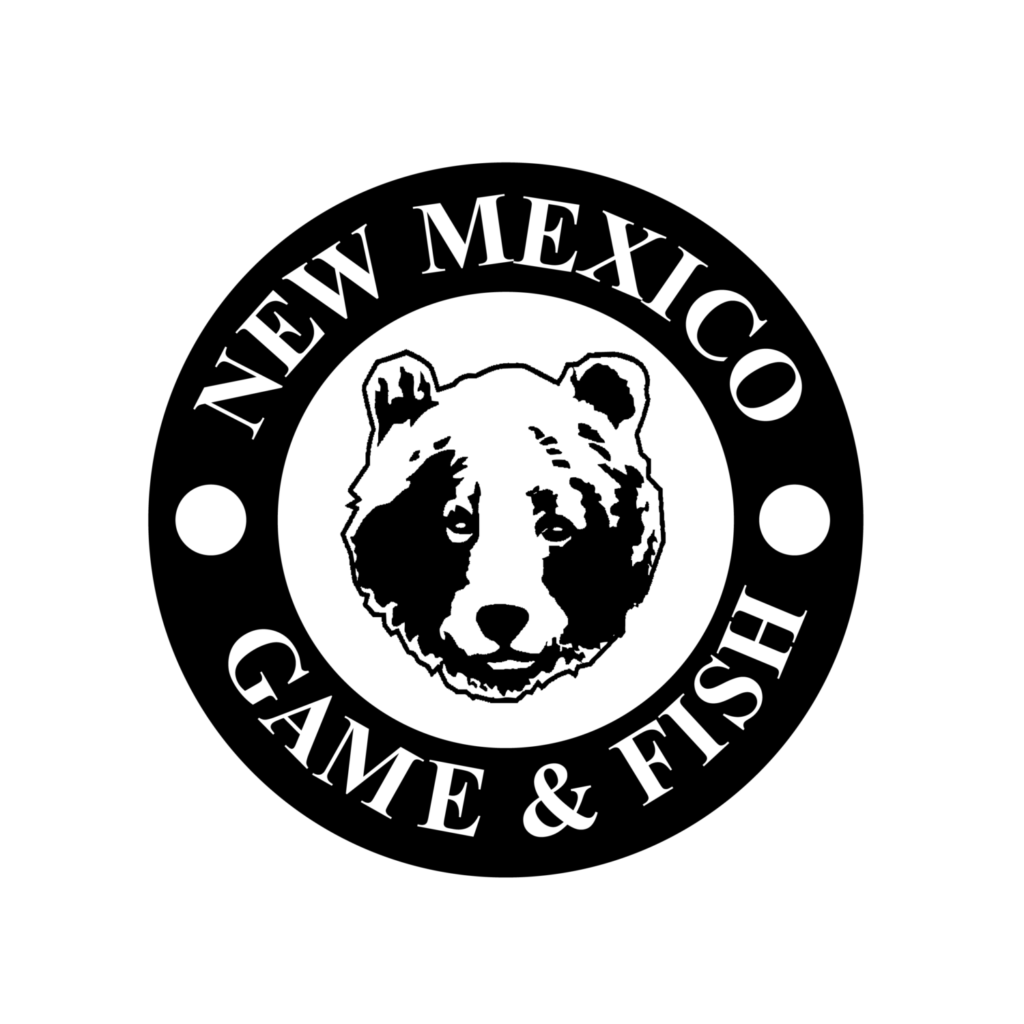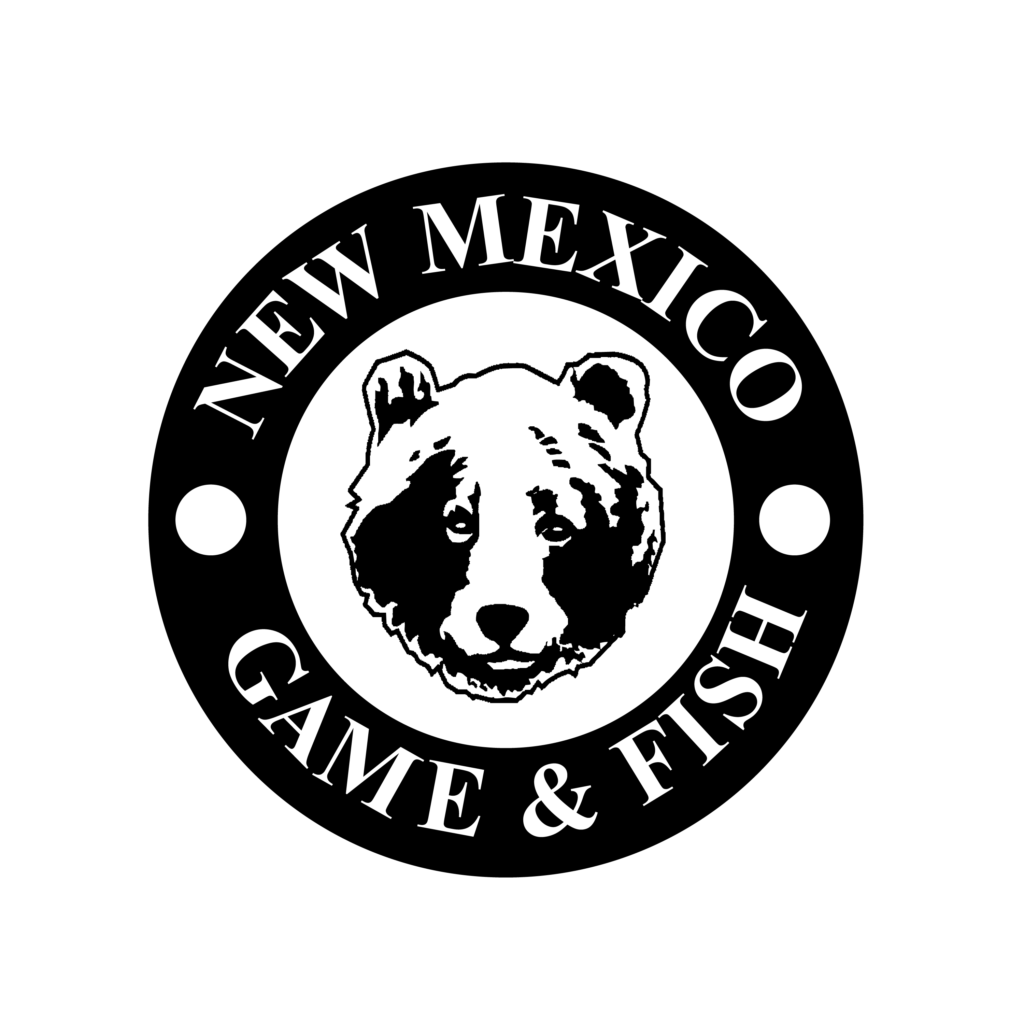Following is a selected project highlight from the Share with Wildlife mission to assist all New Mexico wildlife in need, no matter what species.
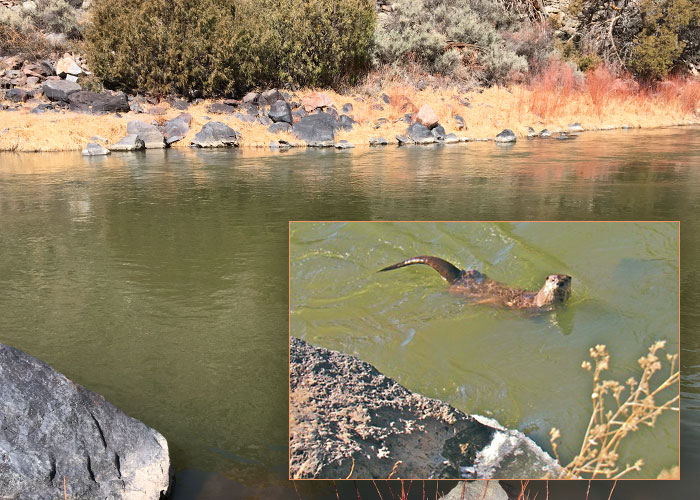
Rio Grande near otter latrine. (Ginny Seamster) — Inset: River otter. (Brian Long)
Did you know that we have North American river otters in New Mexico? This charismatic mammal was reintroduced to our state from 2008-2010. A big question for this species is whether this reintroduction was successful. We know that otters have spread throughout the northern Rio Grande basin. However, there are many specifics that we are missing. How many otters do we have? Are the different New Mexico otter populations all connected or are otters having a hard time moving around the state? Are the otter populations genetically healthy? Using funds from the Share with Wildlife program, and other sources, Dr. John Cox and his team at the University of Kentucky are trying to answer these and other questions.
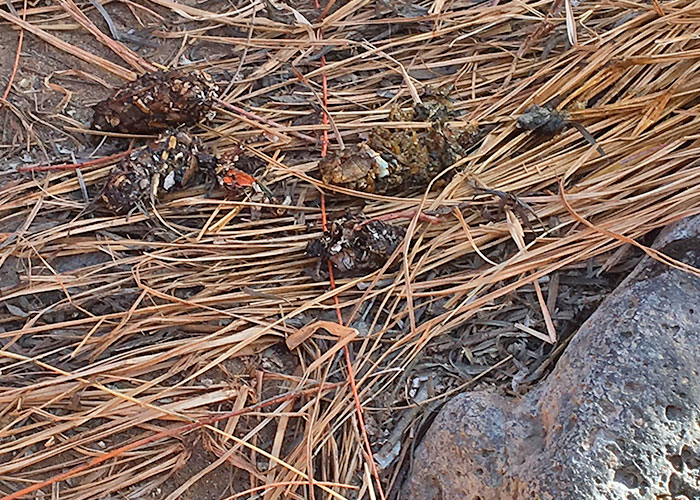
Otter scat sample. (Ginny Seamster)
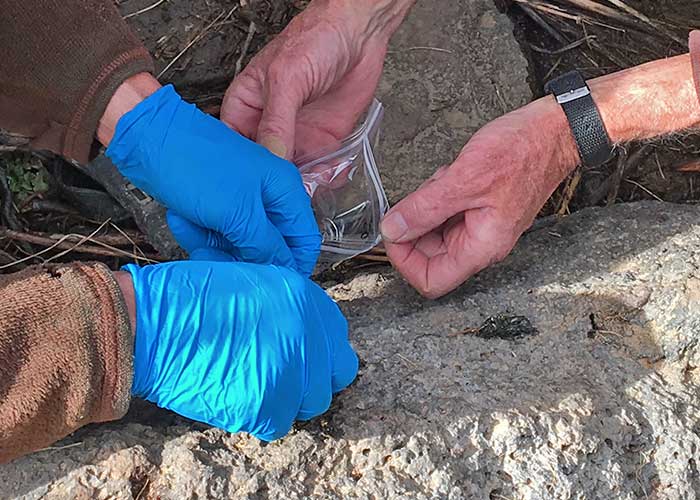
Sampling otter scat. (Ginny Seamster)
How do you answer all of these important questions? It isn’t glamorous, but collecting otter fecal material and carrying out genetic analyses on DNA extracted from these scat samples is a highly cost effective and efficient way of learning about these animals. It allows for samples to be collected across the currently known distribution of this species in New Mexico and produces data that can be used to calculate estimates of both otter abundance and density. Additionally, while otters spend much of their time in the water and can be difficult to detect, scats can be collected on land at sites, called latrines, that multiple otters visit.
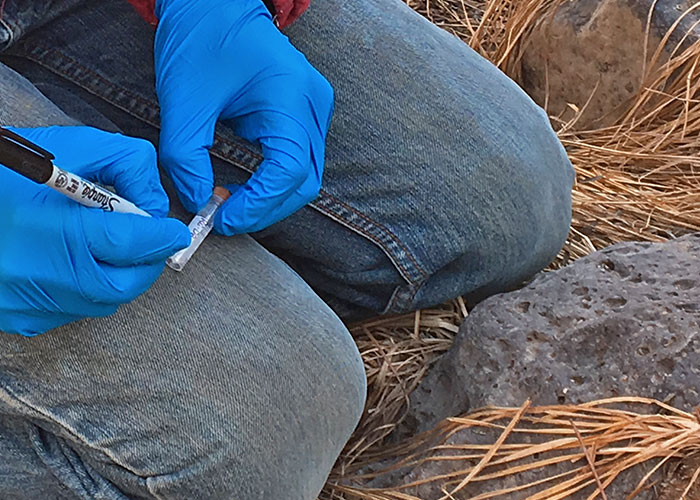
Labeling sampling tube. (Ginny Seamster)
Dr. Cox’s field technicians, Brian Long and Daniel Boyes, have already identified 20 latrines where they will be collecting scats multiple times through the spring. The portion of the scats not used for genetic analysis will be collected for an assessment of otter diet. All data collected in this project can inform future management decisions regarding the river otter.
